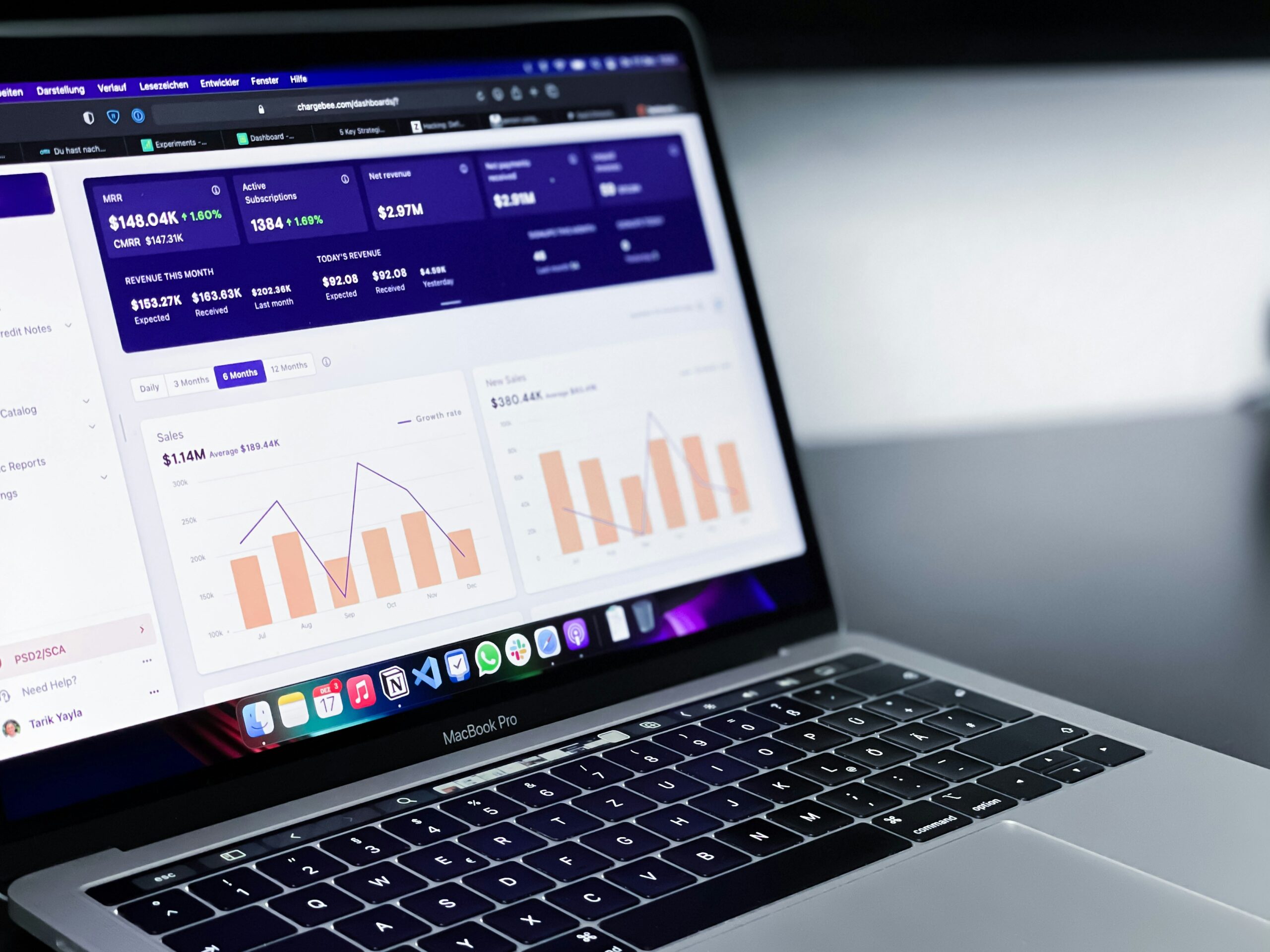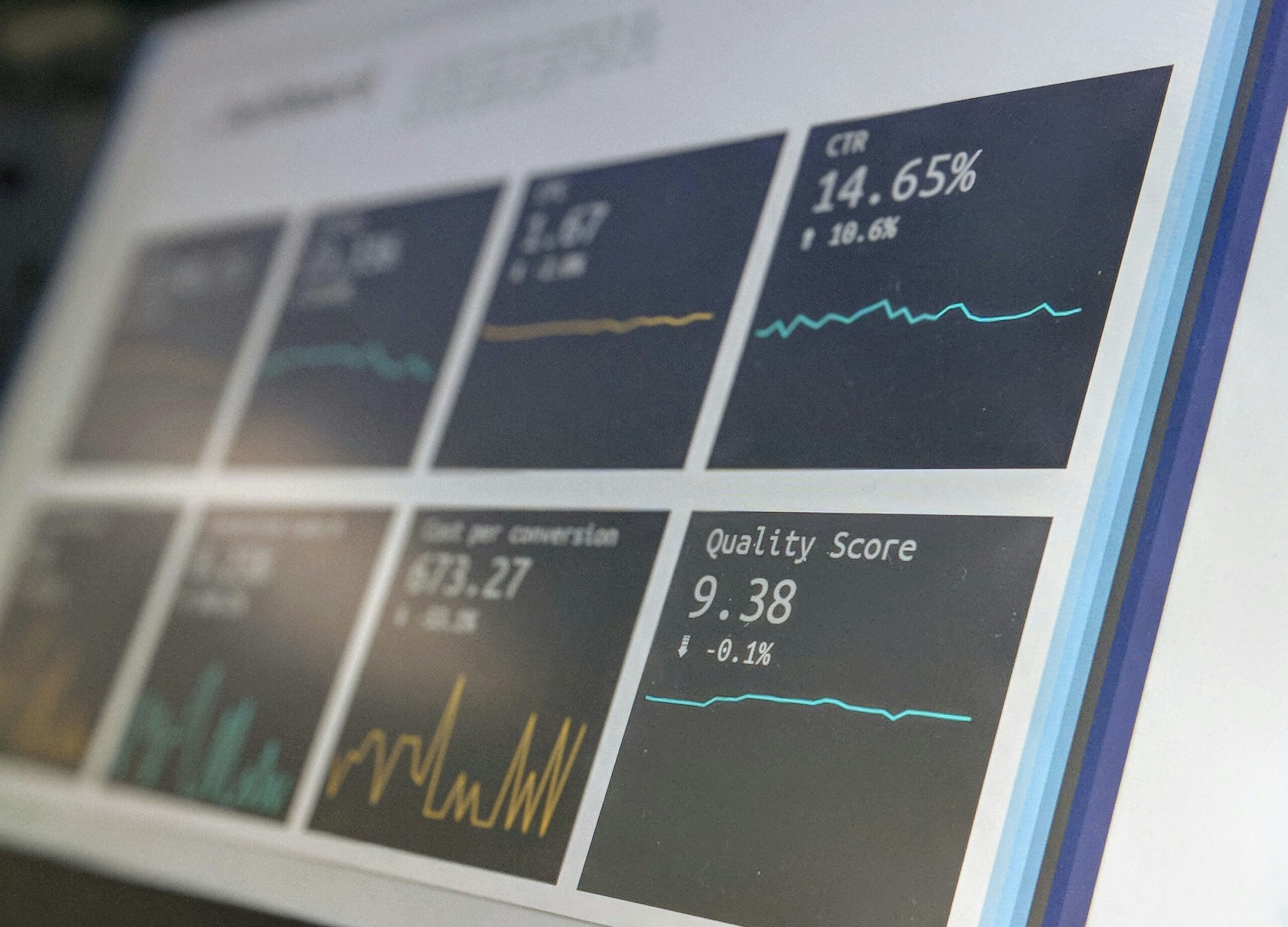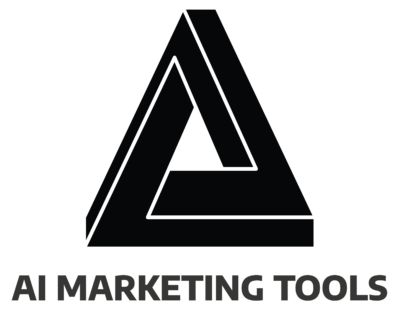
Leveraging Predictive Analytics to Boost Your AI Marketing Strategy
In an age where data drives decisions, predictive analytics emerges as the cornerstone of a successful AI marketing strategy, offering a window into future consumer behavior and market trends.
By harnessing this powerful technology, organizations can refine their marketing efforts, ensuring they resonate deeply with target audiences while optimizing their return on investment.
Using predictive analytics with marketing not only sharpens precision in targeting and engagement but also fuels innovation across various business facets, from supply chain to customer service.
The transition from raw data to actionable foresight requires a blend of art and science, fundamentally transforming data points into a competitive asset.
Keep reading to uncover how integrating predictive analytics will revolutionize your marketing campaigns and elevate your brand’s experience.
Key Takeaways
- Predictive Analytics Empowers Marketers to Anticipate Consumer Needs and Enhance Engagement
- Machine Learning Models Like Random Forest or Logistic Regression Are Crucial for Analyzing Consumer Behavior
- Personalized Promotions Based on Predictive Analytics Can Significantly Improve Customer Satisfaction and ROI
- The Integration of Dynamic Pricing Models Informed by Predictive Analytics Maximizes Profitability
- Ethical Considerations and Responsible Data Use Are Vital as AI Marketing and Predictive Analytics Evolve
Understanding Predictive Analytics in AI Marketing

Predictive analytics holds a crucial position in the domain of Artificial Intelligence (AI)-driven marketing, presenting an inventive approach to refine campaigns and enhance customer engagement. This practice involves extracting information from existing data sets to identify patterns and predict future outcomes and trends, enabling precise targeting and strategic planning in marketing endeavors.
Operating within AI frameworks, predictive analytics utilizes machine learning and statistical models to predict demand, optimize pricing strategies, and improve customer satisfaction. As organizations integrate predictive insights into their marketing systems, the role of predictive analytics becomes pivotal in creating data-driven, intelligent campaigns that connect with both existing and potential customers.
Defining Predictive Analytics Within AI Frameworks
Predictive analytics, in the scope of AI marketing frameworks, incorporates complex data analysis, pattern recognition, and machine learning algorithms to forecast market trends and consumer behavior. This transformative technology allows businesses to interpret vast data sets, ranging from customer purchase histories to social media interactions and uses those insights to predict future outcomes with remarkable accuracy.
The Role of Predictive Analytics in Marketing AI
Predictive analytics revolutionizes marketing by allowing organizations to anticipate customer needs with remarkable precision. By analyzing historical data and current market conditions, these advanced tools enable marketers to craft strategies that effectively address consumer demand, optimize inventory levels, and tailor customer service efforts. This predictive edge translates into a superior customer experience, bolstering brand loyalty and ultimately driving revenue growth.
Integrating Predictive Models Into AI Marketing Efforts

The momentum of the digital age propels organizations toward a future where marketing and Artificial Intelligence (AI) converge, creating fertile ground for predictive analytics.
Embracing predictive models elevates an AI marketing strategy from reactive observations to proactive intelligence.
Engaging in this shift involves two critical steps: the implementation of predictive analytics in AI systems and harnessing key predictive modeling techniques.
As marketers embark on this journey, they unravel the potential for increased targeting accuracy and refined engagement, laying the foundation for a more dynamic interaction with their audience.
Steps to Implement Predictive Analytics in AI Systems
Integrating predictive analytics into AI marketing starts by gathering and organizing data carefully. This ensures marketers have the information needed for predictive models, like random forest or logistic regression. These models analyze past consumer behavior, helping make smarter decisions. Clean and well-organized data is crucial, as it’s the key ingredient for the system to predict effectively, providing insights that guide smart innovations in marketing campaigns.
Key Predictive Modeling Techniques for Marketers
Nowadays, marketers use advanced predictive modeling techniques like neural networks and decision trees to understand complex consumer patterns. These tools provide exceptional foresight, allowing brands to predict market changes, refine marketing messages, and create personalized customer journeys. By using these advanced analytics, businesses can adjust to quickly changing market conditions, making sure their strategies match consumer expectations and new trends.
Enhancing Customer Insights With Predictive Analytics

Creating a successful AI marketing strategy hinges on understanding the nuances of customer behavior. Predictive analytics gives businesses the ability to analyze buying patterns and predict customer actions with remarkable accuracy, once considered futuristic.
As brands delve into predictive algorithms and behavior projection, they gain an unparalleled understanding, enabling highly targeted marketing efforts.
Analyzing Buying Patterns Through Predictive Algorithms
By incorporating predictive algorithms into AI marketing strategies, companies can scrutinize past purchasing data to reveal what shapes consumer decisions. This analysis not only identifies the products that frequently catch a buyer’s eye but also forecasts when they might make future purchases, empowering brands to deploy precisely timed marketing initiatives that enhance the odds of conversion and bolster customer loyalty.
Forecasting Customer Behavior for Targeted Marketing
Harnessing the power of predictive analytics enables businesses to cut through the clutter and identify upcoming buying trends. This capability allows for the creation of marketing strategies that go beyond reacting to trends, instead, anticipating them. This empowers companies to tailor promotions and communication to the expected needs and interests of various customer segments, leading to targeted marketing campaigns that boost engagement and increase conversions.
Boosting Campaign Effectiveness With Predictive Data

In the ever-evolving landscape of AI marketing, predictive analytics stand as a potent tool for enhancing the precision and impact of campaigns.
By transforming complex data into actionable insights, businesses can now deliver content that resonates deeply with each customer and craft promotions with an unprecedented level of customization.
This strategic synergy of predictive data with content delivery and customer segmentation holds the promise of transforming marketing from a scattergun approach to a laser-focused process, driving both efficiency and relevance in an organization’s outreach efforts.
Using Predictive Analytics for Optimized Content Delivery
Predictive analytics fine-tunes the content delivery system, enabling marketers to send the right message to the right audience at just the right time. By understanding and anticipating customer preferences and needs, businesses can craft personalized messaging, leading to more effective communication and a seamless customer experience. The strategic application of predictive insights ensures content is both relevant and timely, fostering engagement and driving campaign success.
Tailoring Promotions With Predictive Customer Segmentation
Personalization is no longer just a buzzword in marketing; it’s a necessity, and predictive analytics is the trailblazer for this new norm. By segmenting customers based on predicted behaviors and preferences, businesses can tailor promotions with incredible precision, resulting in more resonant and effective campaigns. This proactive strategy not only caters to individual customer needs but also significantly boosts the potential for a higher return on investment.
- Analyze past purchasing behaviors to unlock insights into future actions.
- Customize promotions based on segmented customer data—enhancing relevance and resonance.
- Employ machine learning to refine the accuracy of customer segmentation over time.
- Leverage predictive analytics to determine the optimal timing for targeted promotional activities.
Optimizing Pricing Strategies Using Predictive Insights

In a market where customer expectations and competitive landscapes shift swiftly, harnessing the power of predictive analytics for pricing strategies offers a sustainable edge.
By integrating predictive insights into your AI marketing framework, organizations can move from fixed to dynamic pricing models that respond to real-time market variables and consumer behavior.
This strategic application allows brands not only to remain competitive but also to optimize profitability through informed pricing decisions.
Grounded in data science and propelled by innovation, these pricing strategies mirror the fluidity of the marketplace, readily adjusting to the pulses of supply and demand.
Dynamic Pricing Models Powered by Predictive Analytics
Dynamic pricing models that integrate predictive analytics are revolutionizing the way organizations approach their pricing strategies. By synthesizing behavior patterns, competitive data, and market demand, these models equip companies with the agility to adjust prices in real time, thereby maximizing profit margins and customer satisfaction.
| Market Factor | Influence on Pricing | Predictive Analytics Role |
|---|---|---|
| Consumer Demand | Drives price optimization based on demand elasticity | Forecasts spikes or dips in demand to proactively adjust prices |
| Competitor Pricing | Shapes pricing to stay competitive without sacrificing margins | Analyzes competitor pricing trends for strategic positioning |
| Inventory Levels | Influences pricing decisions to prevent overstock or stockouts | Assesses inventory turnover to inform timely price changes |
| Seasonal Trends | Adjusts prices to capitalize on seasonal buying behaviors | Uses historical data to predict and prepare for seasonal shifts |
Competitive Analysis via Predictive Price Optimization
Competitive analysis through predictive price optimization becomes a game-changer for businesses by allowing them to tap into a deep well of market intelligence. By scrutinizing competitor data, organizations can predictively adjust their pricing schemes, ensuring they remain appealing to consumers without undermining profitability. This strategic move, rooted in the analysis of competitive landscapes, enables companies to assert their presence in the market with pricing that is both attractive and sustainable.
Predictive Lead Scoring to Prioritize Marketing Efforts

The integration of predictive lead scoring into an AI marketing strategy can be transformative in marketing.
This system brings a data-driven approach to ranking potential customers based on their likelihood to engage and convert, steering resources toward the most promising leads.
Teams across human resources, accounting, and customer service can harness this intelligence, ensuring alignment and efficiency in their operations.
The ensuing sections dive deeper into how setting up a lead scoring system not only streamlines lead qualification but also incorporates predictive insights to prioritize efforts with precision.
Setting Up a Predictive Lead Scoring System
Initiating a predictive lead scoring system requires the alignment of marketing intelligence with predictive algorithms to evaluate a customer’s potential value: a fusion of behavioral data, engagement metrics, and demographic information fed into machine learning models to score and prioritize leads for marketing outreach. This methodical approach leverages historical data to forecast the likelihood of a lead converting, allowing businesses to allocate their resources more efficiently and increase the efficacy of follow-up strategies.
- Compile and analyze customer demographic and behavioral data.
- Develop machine learning models that predict lead conversion probability.
- Score each lead to determine prioritization for marketing outreach.
Enhancing Lead Qualification With Predictive Intelligence
Enhancing lead qualification with predictive intelligence translates into the fine-tuning of marketing initiatives. By incorporating predictive analytics, brands can assess the propensity of leads to convert, focusing on nurturing high-potential prospects. This strategic application of data science and machine learning refines the lead qualification process, ensuring that marketing efforts are directed toward the most promising opportunities.
- Analyze lead data to identify underlying patterns and indicators of interest.
- Apply predictive models to score leads based on conversion probability.
- Streamline marketing efforts towards leads with higher scores to optimize resource allocation and improve conversion rates.
Measuring and Enhancing ROI With Predictive Analytics

Enhancing return on investment (ROI) occupies the center stage in the marketing strategies of organizations steering through the rapidly evolving digital landscape.
The integration of predictive analytics into these strategies redefines the approach to measuring success, as it provides nuanced insights into performance metrics and expenditure efficiency.
It’s a shift that transcends traditional analytics, enabling businesses to track real-time impacts on ROI and to recalibrate marketing investments proactively, ensuring expenditures align with anticipated market realities and yield maximum value.
Tracking Performance Metrics Affected by Predictive Analytics
By integrating predictive analytics, organizations gain the ability to track performance metrics like customer acquisition costs, lifetime value, and conversion rates. This shift from static to dynamic analysis allows for agile adjustments in marketing strategies, ensuring that resource allocation is both effective and economical, paving the way for a marked improvement in return on investment.
Adjusting Marketing Spend Based on Predictive Forecasts
Predictive forecasts act as beacons, illuminating the path for organizations to adjust their marketing budgets intelligently. Grounded in rich data and advanced analytics, these forecasts enable brands to allocate funds towards strategies that are most likely to resonate with their target audience and maximize engagement outcomes.
| Marketing Component | Traditional Spend | Predictive Spend Adjustment |
|---|---|---|
| Advertising Campaigns | Fixed Annual Budget | Dynamic Allocation Based on Predictive Demand |
| Email Marketing | Cost Per Campaign | Investment Aligned With Predicted Open Rate |
| Social Media | Regular Posts Schedule | Content Boosting During Peak Engagement Periods |
| SEO & Content | Steady Monthly Investment | Increased Funding for High-Impact Topics and Keywords |
Future of AI Marketing: Trends in Predictive Analytics

In the evolving landscape where artificial intelligence (AI) and marketing intersect, predictive analytics stands out as a guiding force for brands navigating the challenges of consumer engagement and business expansion. Key discussions center around advancements in predictive techniques, poised to reshape AI marketing, coupled with a growing focus on ethical considerations. These significant trends mark the onset of a new era, where predictive analytics not only enhances marketing strategies but also influences the future impact of AI on the business landscape. The industry now stands at the brink of a transformative period, anticipating the interplay between progress and ethical standards that will shape the path forward.
Advancements in Predictive Techniques for AI Marketing
Leveraging predictive techniques in AI marketing marks a paradigm shift in strategy development and customer understanding. Through the use of advanced methodologies such as deep learning and natural language processing, modern marketers can refine algorithms to offer more nuanced predictions of consumer preferences and market trends. Exciting advancements in these domains are paving the way for predictive analytics to provide a significant competitive edge, grounded in the ability to foresee and respond to market changes with unparalleled agility.
| Advancement | Impact on Marketing | Benefit to Strategy |
|---|---|---|
| Deep Learning | Uncovers complex customer patterns | More personalized customer experiences |
| Natural Language Processing | Interprets sentiment and intent from text data | Enhanced content relevance and targeting |
| Neural Networks | Models non-linear relationships in large data sets | Improved predictive accuracy for market trends |
Ethical Considerations and Future Implications in AI and Predictive Analytics
As predictive analytics shape the trajectory of AI marketing, ethical considerations take center stage, ensuring that as organizations pursue data-driven advancements, they do so with a steadfast commitment to consumer privacy and unbiased decision-making. The future implications of these technologies hinge on an earnest and transparent discourse regarding the responsible use of consumer data, maintaining public trust, and safeguarding against the potential misuse of predictive systems.
Conclusion
In conclusion, leveraging predictive analytics is essential for enhancing AI marketing strategies.
It enables businesses to gain deep insights from data analysis and machine learning, allowing them to forecast consumer behavior with high accuracy.
By implementing predictive models, companies can target customers more precisely, tailor promotions effectively, and optimize content delivery for maximum resonance and engagement.
Furthermore, predictive analytics can refine pricing strategies and lead scoring, ensuring marketing efforts and resources are deployed for the best outcomes.
With advancements in techniques like deep learning and natural language processing, the potential for predictive analytics in transforming marketing efforts is immense.
However, it’s crucial to navigate these innovations with a strong ethical compass, focusing on consumer privacy and unbiased algorithms.
Ultimately, integrating predictive analytics into marketing represents a powerful avenue for improving ROI, staying competitive, and driving sustainable business growth.

Comments